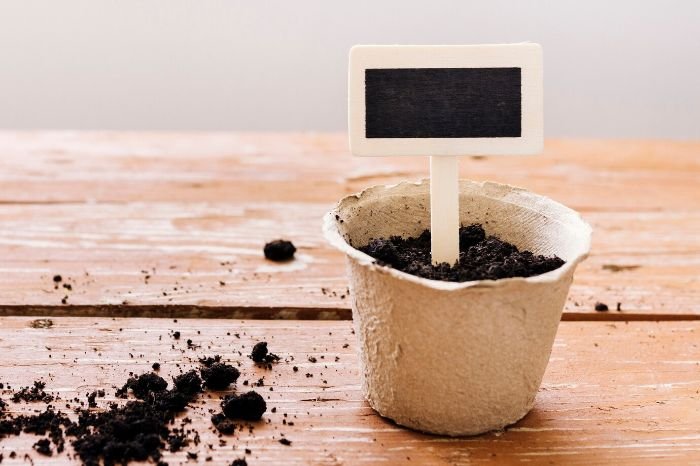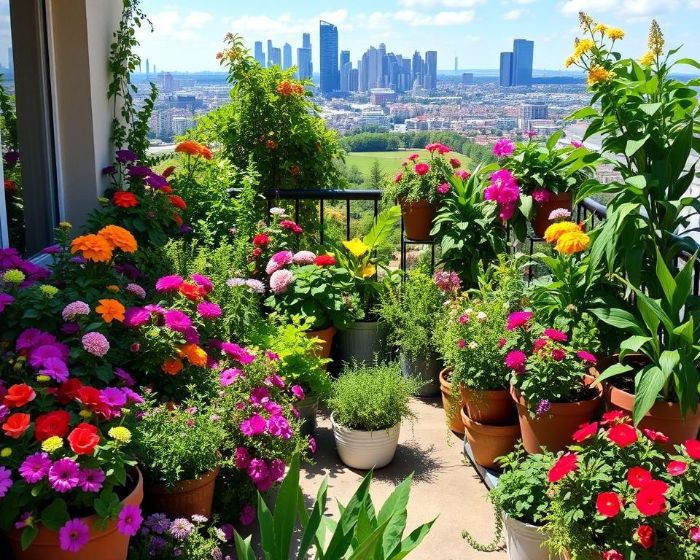Updated October 20, 2025
One heavy watering and the pot stays soggy, leaves dull, and a sour smell creeps from the soil. That isn’t a watering problem, it’s a mix that traps air and starves roots.
Build around a light, springy base that breathes between waterings, add a clean aerator that keeps pores open, and feed with a calm, reliable charge so color holds through hot spells.
A quick feel-and-drain check before planting tells you if the blend will move water or hold it hostage. When texture rebounds in your hand and the surface rewets without puddling, containers wake up, roots roam, and growth finally matches the light your patio gets.
Key Takeaways:
- Tune texture to your pot size and daily sun
- Treat oxygen like food and protect pore space
- Read the surface for crust, smear, and sour smells
- Refresh nutrients on schedule instead of dumping compost
- Avoid dense garden soil that suffocates roots in containers
Table of Contents
What Makes the Best Soil Mix for Container Gardening
Good container mixes keep roots breathing while holding enough moisture to ride out a warm afternoon. Think in properties, not brands – air space for oxygen, fibers for water storage, and a modest nutrient charge that lasts several weeks.
Mix properties roots need
Healthy roots need three things in balance – air, water, and mechanical stability. Aim for a light blend with visible pore space and a feel that crumbles rather than smears. I target a texture that rebounds after a squeeze instead of packing tight.
Pro tip: treat oxygen like a nutrient in pots; without it, water becomes a problem rather than a benefit.
- Airy structure for gas exchange under daily watering
- Moderate water storage without soggy pockets
- Particle mix that resists settling in tall containers
- Modest starter nutrition from compost or a slow-release feed
How properties interact
Air and water trade places inside the same pores, so every change shifts the balance. Finer particles increase holding capacity but reduce airflow, which slows root growth in confined volumes. Coarser particles add porosity and speed drainage, but they dry faster and need closer watering attention.
Use wall material and pot size as cues – small pots and non-porous plastics benefit from extra aeration, while large tubs or unglazed clay tolerate a bit more moisture retention.
What is a good soil mix for container gardening?
A reliable general-purpose starting ratio is 50% lightweight base fiber, 30% mature compost, and 20% aeration amendment by volume. This blend stays open after repeated waterings, carries a baseline of nutrients, and avoids waterlogging in most patio setups.
Nudge the dial when conditions demand it – increase the aeration fraction by 5-10% for small pots or shaded corners that dry slowly, or add 5% more base fiber for wide planters exposed to strong afternoon sun.
Closing rule of thumb – think in trade-offs, keep the blend light, and adjust in small steps rather than big swings. That approach keeps roots active while you fine-tune the mix to your containers and climate.
Ingredients and Ratios – Choose the Right Components
Build mixes by effect, not labels. For nutrient rich soil for containers, pair a lightweight base with the right aerator and a clean nutrient source. Keep each material inside a workable range so the blend stays open, rewets easily, and feeds on schedule.
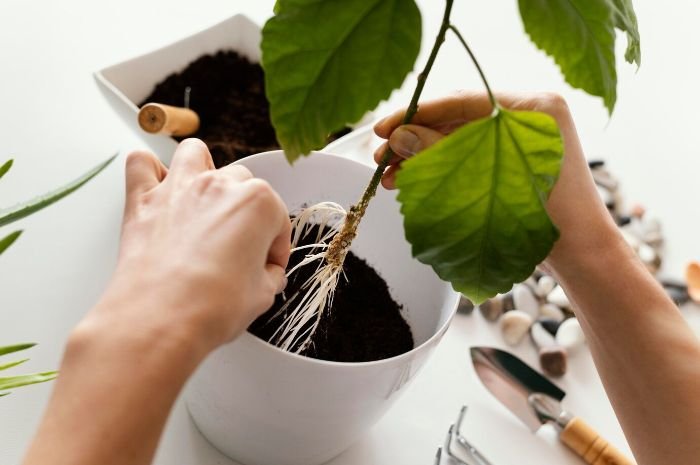
Base materials – coco coir, peat, bark fines
Base materials set water storage and overall feel. Coco coir is neutral to slightly salty when dry; rinse well and use 40-60% of the blend when you need reliable moisture without collapse. Peat is lighter and naturally acidic; it holds water well but benefits from a small lime addition when used above roughly 40%. Fine bark brings structure and long-lived pore space; use 20-40% to add springiness and reduce compaction in tall planters.
Pro tip: I soak coir until it sinks, then drain before measuring volumes. That step prevents dry pockets later.
Aeration amendments – perlite, pumice, vermiculite
Aerators control airflow and drainage speed. Perlite is the standard for fast porosity at low weight; use 15-30% in small plastic pots that stay damp. Pumice is heavier and more durable, so it resists floating and works well outdoors or in windy spots at 10-25%. Vermiculite increases water holding and softens texture; keep it to 10-20% for seedlings or thirsty annuals and skip it for cacti or rosemary.
Pro tip: If the top layer crusts after drying, swap part of the perlite for pumice to keep surface pores open.
Nutrient inputs – compost, worm castings, slow-release
Nutrient sources should be clean and moderate. Mature compost at 20-35% maintains balanced nutrition without raising salt levels. Worm castings are potent in small doses; 5-10% is enough for leafy growth without tightening the mix.
Add a slow-release fertilizer at label rate for an 8-12 week charge, and refresh on that cadence for long seasons. When peat content runs high, a light dose of dolomitic lime keeps the blend more stable over time.
Pro tip: If foliage edges brown after a heat wave, cut compost by 5% next batch and lean on slow-release for longer-lasting feeding.
| Component | Role | Drainage | Water hold | pH trend | Typical % |
|---|---|---|---|---|---|
| Coco coir | Base fiber | Medium | Medium | Neutral | 40-60 |
| Peat moss | Base fiber | Medium | High | Acidic | 30-50 |
| Bark fines | Structural | Medium | Medium | Slightly acidic | 20-40 |
| Perlite | Aeration | High | Low | Neutral | 15-30 |
| Pumice | Aeration | High | Low | Neutral | 10-25 |
| Vermiculite | Aeration/hold | Medium | High | Neutral | 10-20 |
| Compost | Nutrients | Low | Medium | Varies | 20-35 |
| Worm castings | Nutrients | Low | Medium | Neutral | 5-10 |
Use the table as a dial: raise aeration when pots dry slowly, raise base fiber when winds or afternoon sun strip moisture too fast. Keep each ingredient inside its band to avoid collapse, float, or salt stress.
Tight mixes start with good materials and sensible ratios. Measure by volume, record adjustments, and change one variable at a time so the next batch improves instead of drifting.
DIY Container Soil Mix Recipes by Plant Type and Climate
Recipes work best when they match plant demand and local weather. Use one base blend for structure, one aerator for airflow, and one clean nutrient source, then nudge percentages to fit pot size and exposure.
How do I make my own container soil?
Measure by volume, not weight, and blend dry ingredients before moistening to a wrung-sponge feel. Start with one base fiber, one aeration amendment, and one nutrient source, then adjust in 5-10% steps based on drainage speed and plant response.
Vegetables and fruiting crops
Fruiting plants lean on steady moisture and a background feed. Aim for a mix that holds water without sealing the pores in deeper containers. I pre-charge with slow-release at label rate and top up midseason with a light side-dress rather than increasing compost in the base blend.
Pro tip: If foliage wilts between regular waterings during a heat stretch, raise the base fiber by 5% instead of cutting aeration.
Herbs and flowering annuals
Most herbs prefer a slightly leaner mix with lively airflow, while bedding flowers like an even texture that rewets cleanly. Keep nutrient sources moderate so growth stays compact and flavorful for culinary types. A small portion of vermiculite can help with uniform moisture for shallow-rooted flowers on sunny patios.
Succulents and cacti
Dry-climate plants need fast drainage and firm structure. Use a higher share of mineral aeration so the root zone never sits in cold, damp media. Skip vermiculite here and keep compost low to reduce salt load and soft growth. In wide, shallow bowls, a coarser grade of pumice prevents surface sealing after heavy watering.
| Plant group | Base % | Compost % | Aeration % | Optional additives | Notes |
|---|---|---|---|---|---|
| Vegetables & fruiting | 50 | 25 | 25 | 1 tbsp slow-release per gallon | Holds moisture without slump |
| Herbs & flowering annuals | 45 | 20 | 35 | 5% vermiculite for shallow pots | Airy feel, easy rewet |
| Succulents & cacti | 35 | 10 | 55 | 5% coarse sand if very humid | Sharp drainage, stable surface |
Treat the table as a baseline. Shift within each band rather than swapping materials, so texture and pH stay predictable across batches.
Climate and container tweaks:
- Hot-dry balconies – raise base fiber by 5% or switch part of aeration to pumice.
- Cool-humid patios – cut compost by 5% and favor perlite over vermiculite.
- Windy roof decks – add 5% bark fines to resist settling and float.
- Small plastic pots under shade – reduce aeration by 5% to slow drying.
- Unglazed clay or large tubs – add 5% compost or vermiculite to reliable moisture.
Choose the nearest recipe, test one pot before scaling, and log adjustments. Small percentage moves keep structure intact while you dial in plant performance.
Drainage, Compaction, and Mid-Season Fixes
Healthy roots depend on constant airflow as much as moisture, so soil drainage for containers needs periodic checks during the growing season. Look for slow-moving water, surface crust, or a pot that stays heavy long after watering; each signal points to a fixable mix issue.
Quick in-pot tests
Run water gently and watch the surface. If water pools for more than 20-30 seconds before sinking, fine particles are clogging pores. Time the saucer fill and release – a fast flood followed by a long drip points to perched water near the base. Push a bamboo skewer to the bottom and pull it out; shiny smear and resistance indicate compaction, while a clean pull with faint crumbs shows open texture.
Pro tip: Lift each container after a full soak and again 12 hours later. If weight barely changes, airflow is blocked and roots are idling.
Common symptoms and adjustments
Use targeted changes rather than a full repot when plants are established midseason.
| Symptom | Likely mix issue | Adjustment |
|---|---|---|
| Water pools on top | Fine particles sealing pores | Scratch the surface 0.5 in, top-dress 0.5 in pumice or bark fines, then water through |
| Pot stays heavy 24 hours after irrigation | Low air space, perched water | Core 6-8 vertical channels with a skewer, backfill holes with perlite or pumice, raise pot on feet |
| Green film or moss on media | Constant surface damp, poor airflow | Improve sun and air movement, swap top 0.5 in for coarse bark, extend intervals slightly |
| Mix dries unevenly with hard dry pockets | Hydrophobic fibers | Pre-wet with a watering can plus a drop of mild dish soap per gallon, then bottom-water once |
| Perlite floats and strata form | Particle segregation | Work in 0.25-0.5 in of pumice at the surface, water slower, add splash guards in wind |
Small, precise adjustments restore pore space without shocking the plant. If problems persist after two cycles, plan a controlled partial repot when temperatures ease.
Can I use regular soil in pots?
Avoid straight garden soil in containers because dense mineral particles collapse air space and restrict root growth. For rare outdoor tubs over 15 gallons, a screened topsoil portion up to 10-15% can work when blended with bark fines and pumice, but dedicated potting media remain safer for structure and sanitation. When comparing potting soil vs garden soil, choose the blend that keeps pores open under frequent watering and wind.
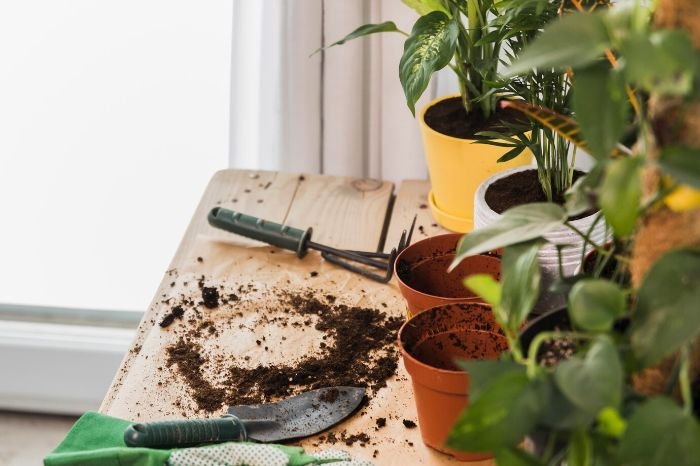
Mid-season rehab steps without repotting:
- Core 6-10 holes straight down with a skewer, 0.5-1 in apart near the worst areas.
- Backfill holes with pumice or perlite and water slowly to settle particles.
- Replace crusted top layer with fresh mix and raise the container on feet.
- Rehydrate stubborn dry zones by bottom-watering for 20-30 minutes, then drain fully.
- Resume normal irrigation and recheck weight drop after 12 hours.
Good mixes breathe, and good care keeps them that way. Tackle the specific failure signal, make one change at a time, and re-test so the container returns to a lively, oxygen-rich rhythm.
Quality Checks, pH, and Safe Handling
Good mixes start with quick checks before planting and simple monitoring during the season. Verify pH and soluble salts, confirm texture and rewet behavior, then handle dusty or biologically active materials with care. Ten minutes up front saves weeks of chasing weak growth.
pH and EC targets
Test fresh bags or a new batch before filling pots. Most vegetables and fruiting crops run well at pH 6.0-6.8, many herbs and bedding flowers at 5.8-6.6, and desert plants at 5.5-6.2. Keep electrical conductivity around 0.5-1.0 mS/cm for seedlings and 1.0-2.0 mS/cm for established container plants.
If pH reads below target, blend in a small dose of dolomitic lime and let the mix rest 7-10 days. If pH drifts high, water twice with slightly acidified water or top up with a peat-forward portion to nudge values down. Retest after any adjustment and again midseason, especially after heavy feeding or frequent rain.
Pre-mix QC – texture and rewet performance
Texture should show a spread of particle sizes so pores stay open. Rub a handful between palms; the mix should break into loose crumbs rather than smear. For rewet behavior, sprinkle a measured cup of lukewarm water over a dry surface layer. If beads sit for more than 45-60 seconds, fibers are hydrophobic; pre-hydrate with a few light passes or add a labeled wetting agent to the first watering.
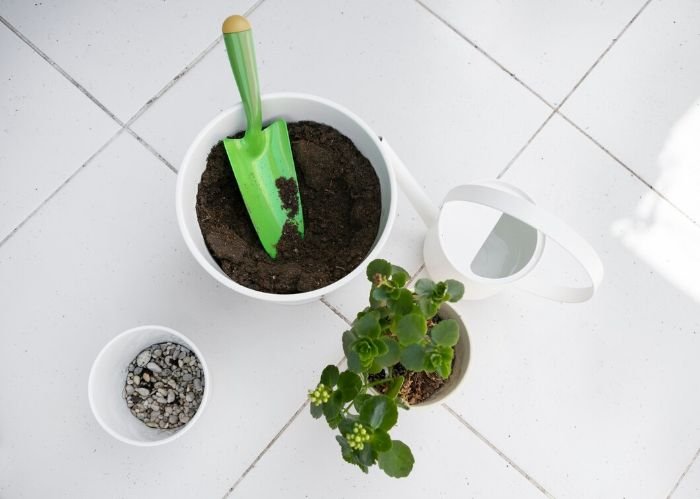
A quick jar check also helps – shake a small sample with water, then watch fines settle and coarse bits float apart. You want separation, not a uniform sludge.
Safety and storage
Treat dust and microbes with respect. Dampen perlite or pumice lightly before handling and wear a simple dust mask during mixing. Keep compost clean and cool, off the ground and out of direct sun; sour or sulfur odors signal anaerobic spoilage, so discard that batch. Store opened bags sealed and shaded, and aim to use them within 3-6 months so fibers don’t collapse or dry into hard bricks.
QC checklist before filling containers:
- Verify pH and EC on a small sample and record numbers.
- Check particle spread by feel; add bark fines if texture feels flat.
- Run a surface sprinkle to confirm rewet time under 1 minute.
- Moisten dusty aerators and mix outdoors or in a ventilated area.
- Label each batch with date, ratios, and any amendments for repeatability.
Simple standards keep mixes predictable. Test small, adjust once, and document the change so every batch grows like the last successful one.
Practical Wrap-Up
Treat mixes like a living system with a simple control loop. Blend a small pilot batch, run a fast drain-and-rewet check, then adjust in 5% moves only. Changes that small keep structure predictable while you dial air, water, and nutrition to the plant and container at hand.
If the potting day is hot or windy, target a slightly heavier base and hold aeration steady. If nighttime temps stay cool for a week, do the opposite and nudge aeration up. When color fades evenly while drainage looks normal, refresh the fertilizer charge rather than increasing compost in the next batch. If a pot stays damp under light watering, thread a cotton wick through a side hole to the outside air and let capillarity pull excess moisture away before you remix anything.
A quick cadence keeps containers on track: test one sample before the season starts, spot-check a few pots after the first heat wave, and revisit ratios when you switch from spring herbs to summer fruiting crops. The best soil mix for container gardening works because you keep the adjustments small, recorded, and tied to real signals from your plants and weather.
- Mix a one-gallon pilot, record the ratios.
- Run a fast drain-and-rewet check, adjust by 5%.
- Log pot size, exposure, and aeration choice.
- Refresh fertilizer when color fades evenly.
- Add a wick to damp pots before repotting.
FAQ
How often should I replace or refresh potting mix in containers?
Top up by 20-30% each spring to restore structure and nutrients, then fully replace every 2-3 years or sooner if drainage time creeps past 30-45 seconds and leachate EC holds above 2.0 mS/cm after a flush. Record dates and readings so batches stay consistent year to year.
Can I safely reuse last year’s media for a DIY container soil mix?
Yes, after removing roots and flushing with clean water until runoff EC drops near 1.0 mS/cm, rehydrate the media, then rebuild with 20-30% fresh base fiber, 10-15% mature compost, and a new slow-release charge; check pH and adjust before planting.
What changes should I make for self-watering containers with reservoirs?
Increase mineral aeration by 5-10% and keep fine particles low so the wicking zone stays open; set the overflow to prevent a standing water line inside the root zone, and watch for algae or sour smell as early warning that oxygen is limited.
Do biochar or rice hulls help in container mixes?
Biochar at 5-10% improves porosity if pre-charged with compost tea or dilute fertilizer so it does not tie up nutrients; rice hulls at 10-20% add short-term loft but break down within a season, so plan to refresh structure on the next batch.
How do I batch the right amount for large planters without waste?
Use a 5-gallon bucket as the measuring unit, blend by bucket counts rather than weight, and plan 10-15% extra volume to account for initial settling; slightly moisten ingredients before mixing so volumes stay consistent and the blend seats evenly.
What are reliable signs that salts are building up, and what’s the fix?
Leaf tips brown uniformly, a white crust forms at the rim, and runoff EC stays above 1.5-2.0 mS/cm even on plain water; leach with two slow irrigations spaced 30 minutes apart and resume feeding at a lower rate once readings fall under 1.0-1.2 mS/cm.
Should fabric grow bags use the same mix as plastic pots?
No, fabric breathes more and dries faster, so bump base fiber by about 5% and trim aeration by the same amount, then check moisture twice daily during hot spells until watering intervals stabilize.
How does water quality affect soil drainage for containers and pH control?
High alkalinity water (>100 ppm as CaCO3) pushes pH upward and can tighten the mix over time; acidify irrigation to pH 6.0-6.5 or lean slightly toward peat-forward components, and recheck pH every 4-6 weeks during heavy watering periods.






